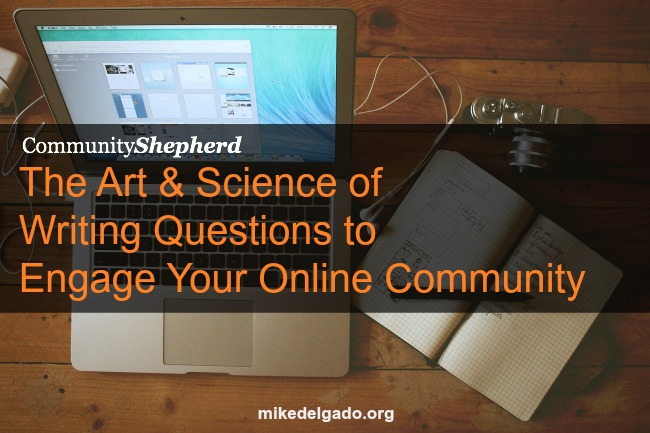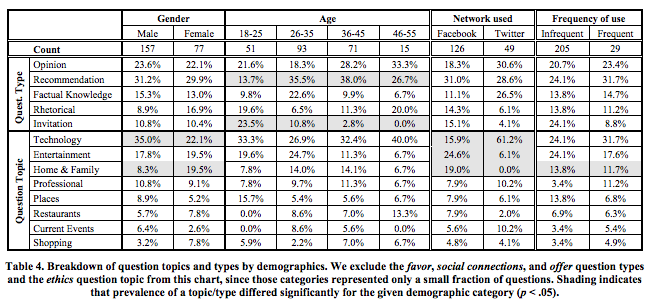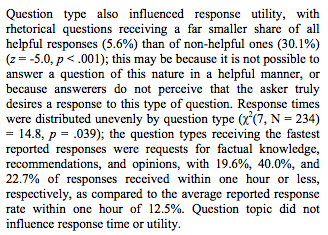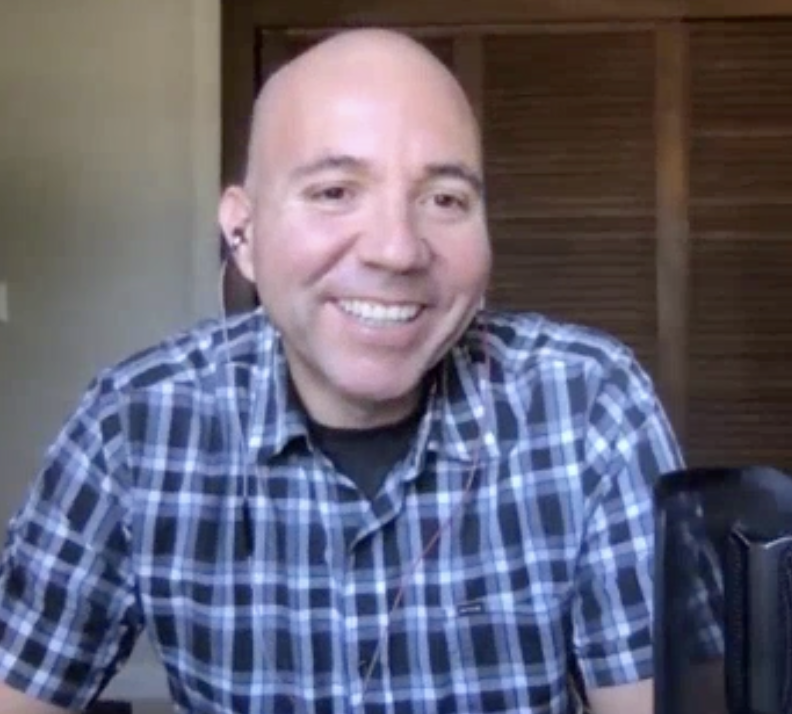
A big part of my job as a community builder is to encourage community members to engage with each other and the brands I work with.
One way that I’ve been building engagement with my communities is through live events (e.g. chats on Facebook, Twitter, and Google+). There’s nothing like live online events to build rapport with community members – and improve relationships.
When hosting live events (e.g. tweetchats), it’s important to know what sorts of questions you want to ask to encourage conversation.
best place to buy Clomiphene Let me share with you some tips to writing engaging questions …
Lurasidone shipped overnight delivery 1. Write specific, open-ended questions to increase engagement.
You don’t have to be a community manager to know that asking open-ended questions can encourage people to engage with you. However, not all open-ended questions work well simply because the question requires too much thought.
Instead of asking a vague question like, “How do you save money,” you should ask something more specific like “How do you save money when grocery shopping?” Asking a more specific question helps people think of an answer faster. In one study, researchers found “asking a specific questions rather than making a statement or asking an open-ended question increases the likelihood of getting a response by fifty percent” (Burke, Kraut, & Joyce, 2010).
Time yourself on how fast you can think of a response. If it takes you time to think of a good answer, you should revise the question.
2. To improve engagement in social networks, craft simple questions that are easy to read and respond to.
When writing questions for your next status update, think of questions that will be easy to respond to quickly.
Remember, that you’re writing questions that might only appear on a mobile device stream for just a few seconds. If the question requires too much reading – or too much time to respond, you’re message is just going to get swiped away up the stream.
In a survey study on status message question behavior, researchers at Microsoft and MIT found that the most common reason why people don’t answer questions is simply not knowing the answer (Morris, Teevan, Panovich). Furthermore, “Longer messages that use more complex sentences and vocabulary impose a greater cost on readers, reducing the chances that the message will be read or responded to (Arguello, Butler, Joyce, Kraut, Ling, Wang).
Remember, your audience is probably consuming your content on a mobile device, so if you want to earn finger taps, you better ask something your audience can answer quickly without typing too much.
3. Create custom questions for each social channel you’re using based on the target audience you are trying to reach.
Social media management platforms make it really easy to post the same question across all your social channels. But is this the right approach for getting the best engagement?
Know your audiences well enough across your social channels to understand what type of questions and content will engage them on each network. Even if you have similar followers across different social channels, they probably will want to engage differently based on the platform. For example, questions about entertainment are better suited for Facebook than LinkedIn.
Researchers at Microsoft and MIT investigated whether the social network used to post a question influenced question topic or type. And they found that there is a higher proportion of technology questions on Twitter, and more questions about home, family and entertainment on Facebook (Morris, Teevan, Panovich).

If you’ve spent any amount of time on Facebook and Twitter, you probably already know some of these differences in content. The lesson here is to share questions appropriately for the audience and channel you’re on.
Don’t spray the same question on every social channel just because your social management platform makes it easy to do.
4. Mention or tag people appropriately in the post to improve engagement and get responses 50% faster.
I want to share with you a simple way to draw out engagement from those in your community (or those you want to bring in).
Simply using a specific person’s name in a question will help get an answer 50% faster.

This method can work on practically any social network that allows you to mention or tag another person in a post. This should be used carefully because you don’t want to bother or upset someone who has no interest in participating.
Tagging someone in a post doesn’t mean you’re even asking them to answer. You can tag people simply as a way to reference something. For example, I was hosting a #MarketingChat and we were having a discussion about great email marketing. I tweeted that I really enjoy reading emails by Chris Brogan – and used his Twitter handle in the tweet. I wasn’t asking him to get involved – just wanted others to know he was on Twitter, too. Chris responded back thanking me for letting others know about his emails. This never would have happened if I hadn’t mentioned him.
If you’re not getting much responses to your questions in a live chat, ask someone directly a question you know they can answer. This is a great way to start a discussion.
5. To increase motivation to answer your questions, create questions that will help members share their expertise.
One of the biggest reasons why someone will answer your question on a social network is to be helpful (and share their expertise) with the community. This is important to keep in mind because you want to write questions that will help your community members share insights to help others.
In a study dealing with motivation for answering questions on social networks, the largest motivations were altruism and expertise. The lowest reason for answering was humor and ego.

Post questions that allow members to share their knowledge to help the community – not rhetorical questions or questions when answered have no real value to anyone. You want the answer to be valuable to the community – and useful (which can often drive shares of the content – and expand the reach).
6. Ask questions that seek out knowledge, recommendations and opinions for faster responses.
In the same study above, researchers found that response times to questions are faster when requests were made for factual knowledge, recommendations and opinions. This goes back to the importance of creating questions that will allow people to be helpful to you and the community.

This doesn’t mean you can’t ask humorous questions or friendly questions like “how are you doing today?” to build engagement. Friendly and funny questions definitely can work, too. You’re just more likely to get a response faster when the questions is geared toward needing information or advice on something.
7. Respond back to those that answer you to improve further engagement – especially newcomers.
To improve engagement with your community, it’s important to recognize and respond back to those that engage with you.
If you post a question (and someone responds), reply back with a comment or at least with an acknowledgement that you read their message with a like, favorite, or however you show acknowledgement in the social network you’re using.
Engaging back shows other community members that you value responses – and nothing goes unnoticed. Nobody like posting a thought and not seeing any response to it. If someone posts a response to your question, acknowledge it in some way. This is especially important for anyone new in your community. Show love and appreciation from the start – which will help you gain trust and further engagement later.
Lastly, when posting a question that you would like to see engagement on – it helps to be the first one leaving the comment (and inviting friends or colleagues to leave their thoughts, too). Simply adding your personal thoughts first can encourage people to join in, too. Some people might want to respond, but don’t want to be first. So take the first step by responding yourself (or invite some friends or colleagues to respond).
Just having a few friends responding back is sometimes all you need to get the conversation going.

